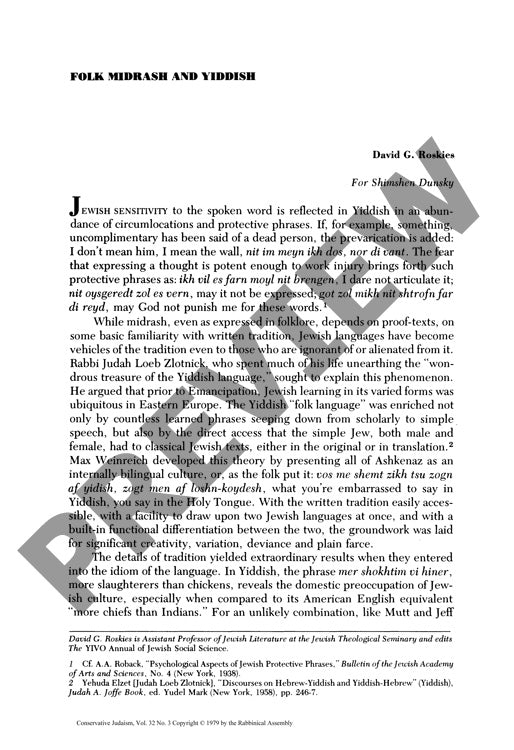Folk Midrash and Yiddish
Couldn't load pickup availability
When Ashkenazi Jews spoke Yiddish in their everyday lives, they wove sacred Hebrew texts into their speech in remarkably creative ways—from marketplace haggling to children's games to underground resistance. Operating as an internally bilingual society, speakers across all social strata adapted religious language for humor, social critique, and even survival mechanisms. Drawing on the theoretical frameworks of Judah Loeb Zlotnick and Max Weinreich, this research analyzes how Jewish traditional texts became deeply embedded in vernacular speech patterns through linguistic examination of idiomatic expressions, protective phrases, and folk interpretations of biblical and talmudic passages. The analysis reveals how traditional texts underwent folk reinterpretation through wordplay, parody, and semantic shifts, creating a rich linguistic tapestry that served multiple cultural functions. During periods of persecution, particularly the Holocaust, this embedded religious vocabulary evolved into a crucial cryptic communication system. Folk midrash in Yiddish ultimately functioned as a vehicle for legitimating new ideas, releasing social tensions, integrating diverse community segments, and preserving Jewish cultural continuity even under extreme circumstances. This linguistic phenomenon represents a unique synthesis of sacred textual tradition and popular vernacular expression.

More Information
-
Physical Description
-
Publication Information
Published 1979
ISBN
-
Publication Credits
David Roskies

